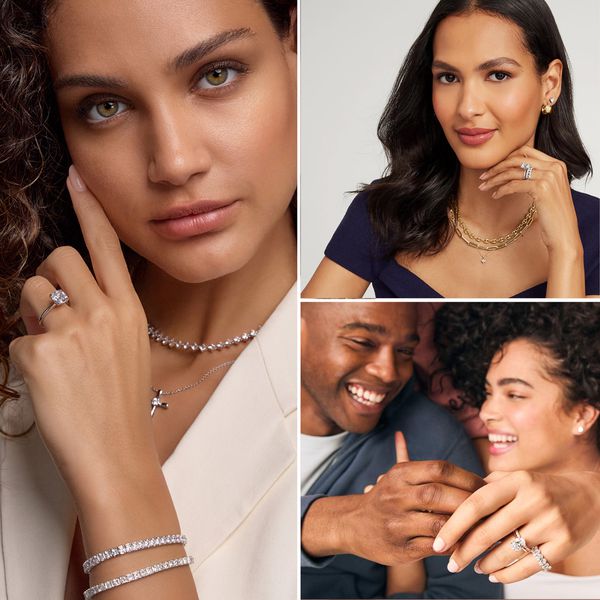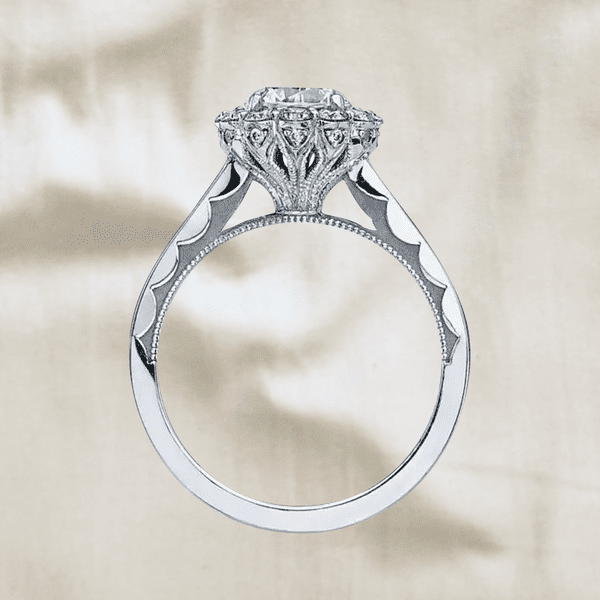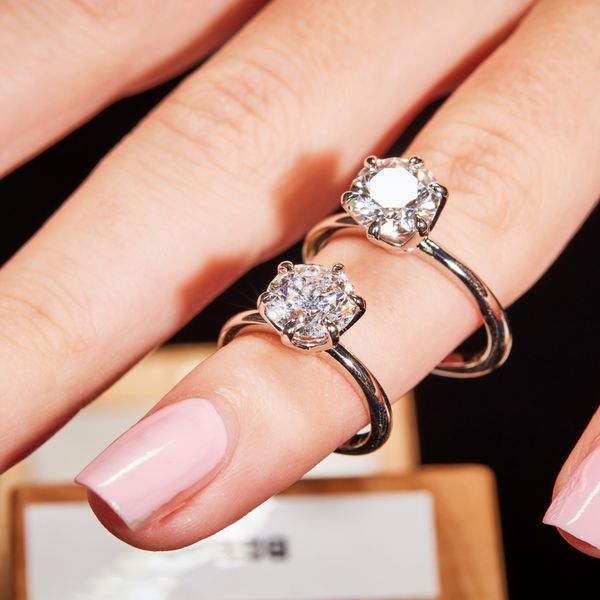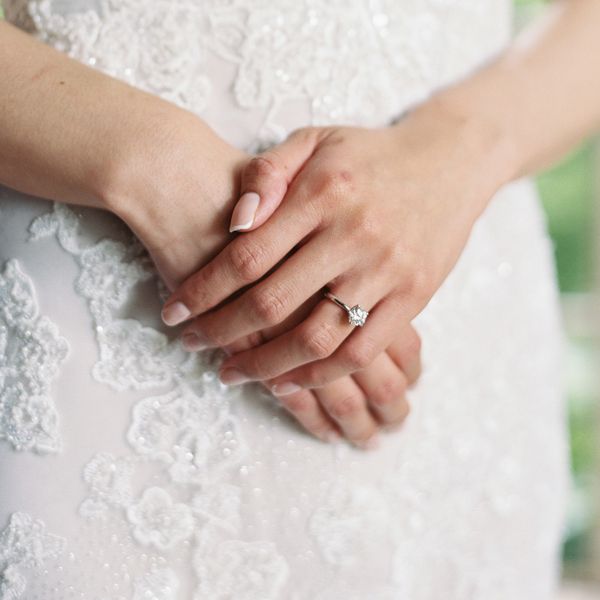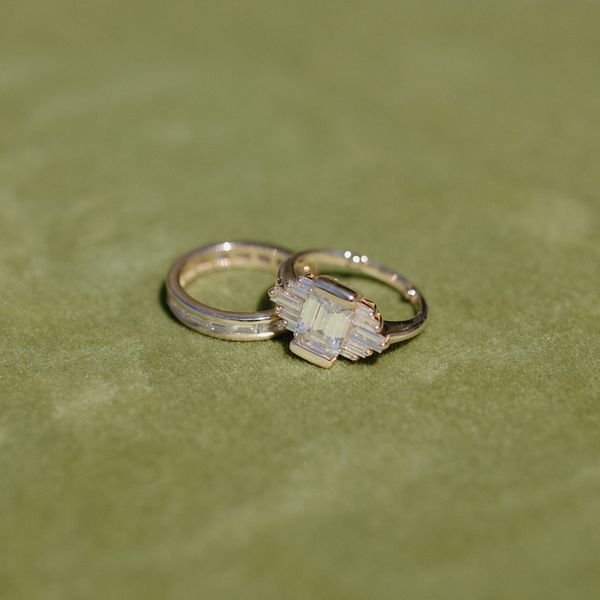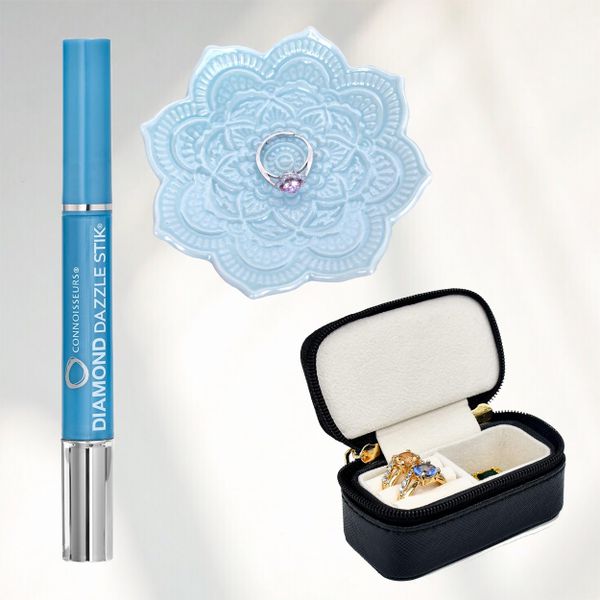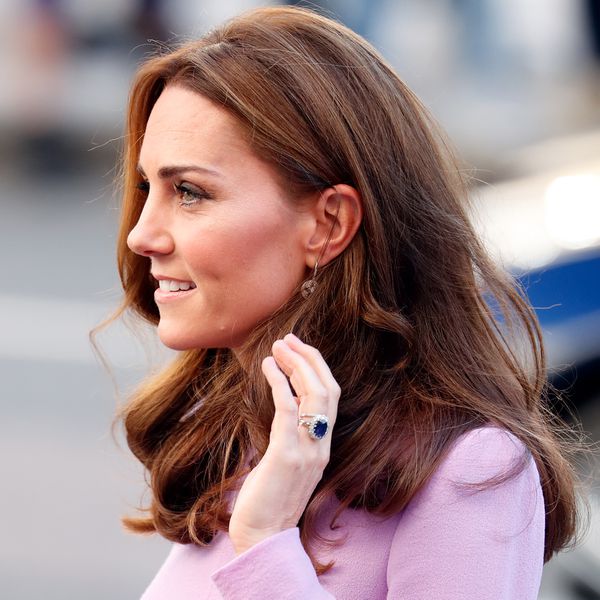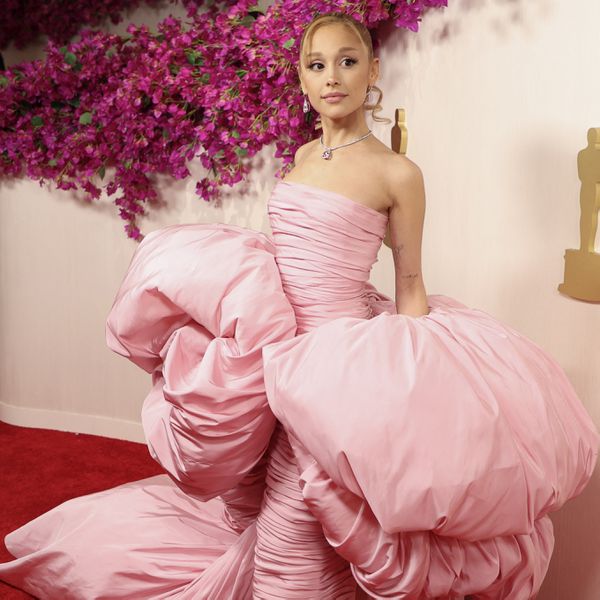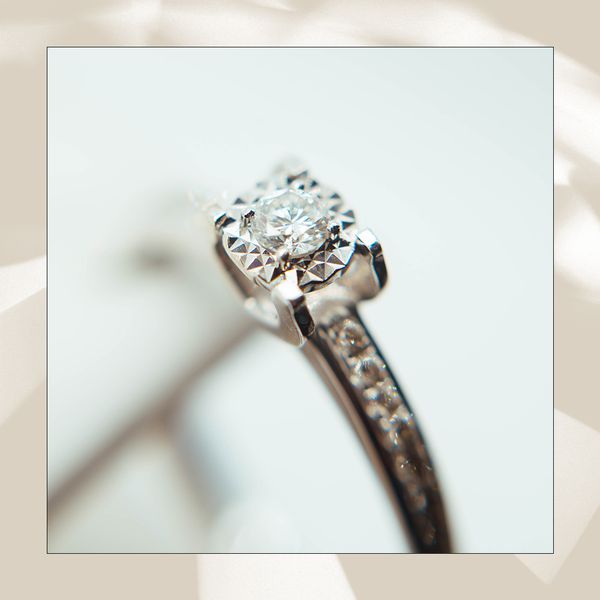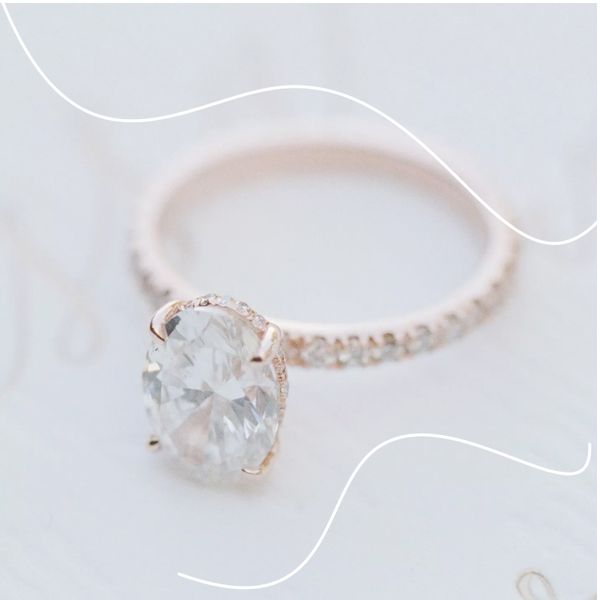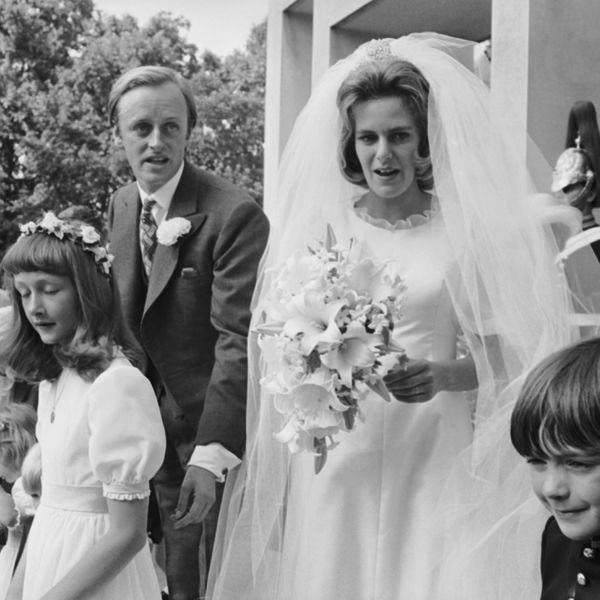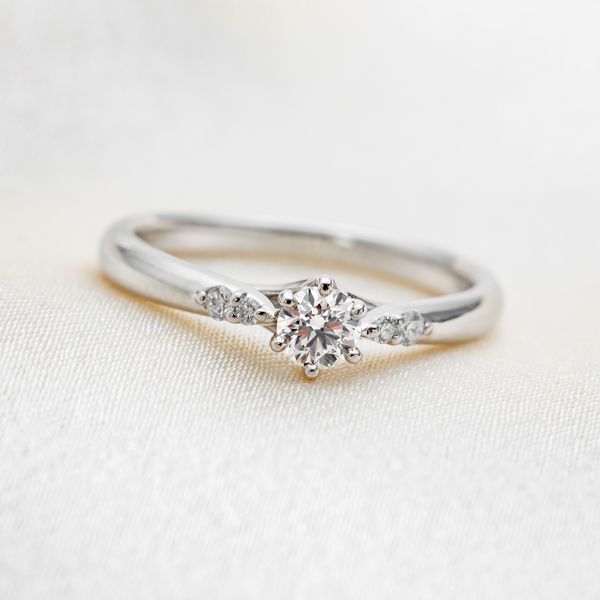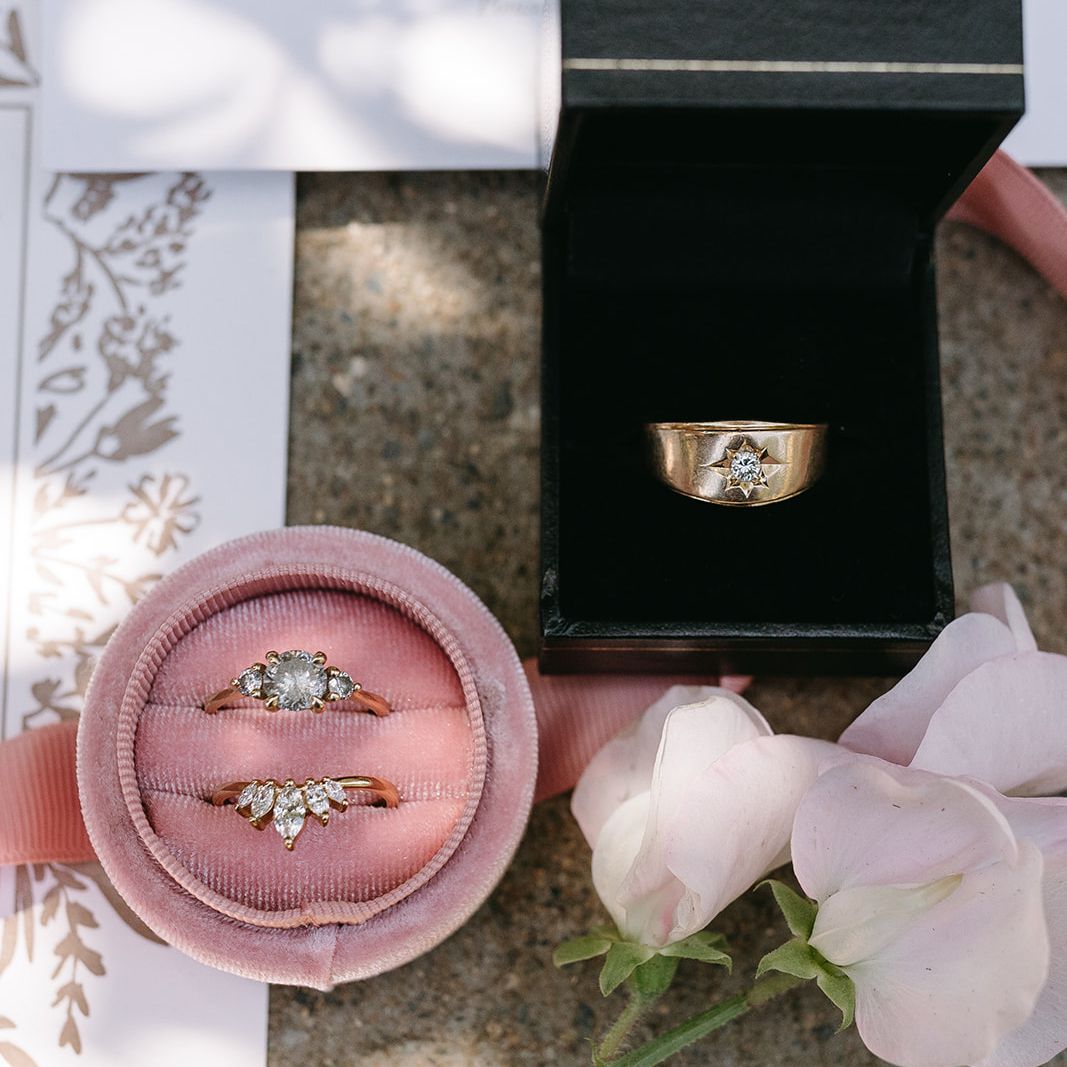
Photo by Sydney Noelle Photography
It's not until you start seriously looking for the perfect engagement ring that you realize how many details there are to consider. Yes, you want a beautiful stone in a cut that works best with your personal style, but there are other specifications to consider that may have never crossed your mind. Choosing between a high-set and a low-set engagement ring is one example.
In order to decide whether you want a high-set or a low-set engagement ring, it's obviously helpful to know more about each particular style. For many, choosing between these two aesthetics simply comes down to personal preferences, but for others, weighing the pros and cons of each design is beneficial in deciding which setting works best overall. So, to keep you as informed as possible, we spoke with two jewelers who have broken down the distinctions between a high-set and low-set ring.
Meet the Expert
- Aditi Daga is the co-founder of Angara, a fine jewelry brand that specializes in everything from engagement rings, necklaces, wedding bands, earrings, and more.
- Anna Bario is the co-founder, principal, and lead designer of Bario Neal, a woman-owned sustainable jewelry line. Since the brand's launch in 2008, it has become an industry leader in ethical sourcing and progressive manufacturing.
Below, read on to learn everything you need to know about both high-set and low-set engagement rings, in order to make an informed decision when ring shopping.
The Difference Between High-Set and Low-Set Engagement Rings
The difference between a high-set and low-set engagement ring is how high the center stone comes off your finger. A high-set ring has prongs that extend upwards, holding the center stone in an elevated position with a significant amount of space between the culet (the bottom pointed tip of a diamond or stone) and the band. A low-set ring features a center stone that sits lower and closer to the finger and band.
"To identify if a ring is low or high set, look at it from the side," says Aditi Daga, co-founder of Angara. "If the center stone appears elevated, it’s a high-set ring. If the stone sits low on the band, it’s low set."
Pros and Cons of High-Set Engagement Rings
High-set engagement rings tend to appear larger and flashier than low-set rings. "If it's the visual appeal you're after, then a high-set engagement ring would be perfect," Daga says. "The high profile of the ring makes the center stone stand out and appear larger than its actual size."
Anna Bario, co-founder, principal, and lead designer of Bario Neal, also notes that a higher setting may cause a stone to appear more sparkly. "Some people think that a high set will make the diamond or gemstone have more brilliance and appear larger since there is more space for light to create a sparkle on the stone," she shares.
Another advantage? These settings typically work better with a wide range of wedding bands. The space underneath the stone makes it easier for an engagement ring, or any other ring, to sit snugly against a band, Daga points out.
However, the downside of this style is that it can easily catch on almost anything (think about your hair or a wool sweater). Not only can this be annoying, but it can also lead to your engagement ring getting damaged. "This could eventually affect the integrity of the stone and may cause cracking or chipping," Daga warns. So if considering this setting, it's important to be extra cautious when wearing your ring on a day-to-day basis.
Pros and Cons of Low-Set Engagement Rings
A low-set engagement ring may look different than a high-set one, but it has advantages of its own, especially when it comes to comfort and durability. "This setting is safer and less prone to any kind of accidental damage," Daga notes. Since the stone sits lower, it's less likely to get caught on things.
"Low settings are also more protective if you want to use heirlooms or more delicate gemstones," Bario says. So if you work with your hands a lot, these may be the way to go. "If you’re, say, a gardener who wants to wear their engagement ring all the time, this type of setting might be right for you."
One of the biggest downsides of a low-set engagement ring, though, is that it's not typically a versatile style. "It’s difficult to accommodate this style with larger gemstones," Bario says. "There’s also less options for how the stone can be set with the overall ring design, and wedding bands may need to be curved or designed to match and avoid a gap between the two rings."
How to Choose the Best Setting Based on Your Personal Aesthetics
High-set engagement rings are ideal for the bride who wants a larger look that will catch everyone's eye, Daga notes. Nonetheless, both Daga and Bario agree that low-set engagement rings are by far the better option for anyone with an active lifestyle or someone who works with their hands a lot.
Picking an engagement ring style is a personal choice, and at the end of the day, both high-set and low-set styles can be beautiful options. Ultimately, you should ask yourself: Are sparkles and a flashier look more important to you? Or are you more concerned with choosing a ring that won't potentially snag on every sweater you own? Whatever the case might be, you can find an option you love in either style.

